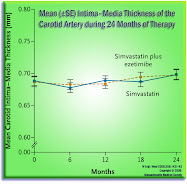And to their credit, NASA scientists are not shying away from grappling with them. Because some of this will ultimately occur in zero gravity, the connection is. . . obvious -- and the paper below has a lead author who works at NASA.
". . .Cells are the fundamental units of life, forming the variety of all living things on Earth as individual cells and multi-cellular organisms. To better understand how cells perform the essential functions of life, scientists have begun developing synthetic cells – non-living bits of cellular biochemistry wrapped in a membrane that mimic specific biological processes.
The development of synthetic cells could one day hold the answers to developing new ways to fight disease, supporting long-duration human spaceflight, and better understanding the origins of life on Earth.
In a paper published recently in ACS Synthetic Biology, researchers outline the potential opportunities that synthetic cell development could unlock and what challenges lie ahead in this groundbreaking research. They also present a roadmap to inspire and guide innovation in this intriguing field. . . ."
Here is what the original paper's authors say, in their abstract:
. . .The de novo construction of a living organism is a compelling vision. Despite the astonishing technologies developed to modify living cells, building a functioning cell “from scratch” has yet to be accomplished.
The pursuit of this goal alone has -- and will -- yield scientific insights affecting fields as diverse as cell biology, biotechnology, medicine, and astrobiology. Multiple approaches have aimed to create biochemical systems manifesting common characteristics of life, such as compartmentalization, metabolism, and replication and the derived features, evolution, responsiveness to stimuli, and directed movement. Significant achievements in synthesizing each of these criteria have been made, individually and in limited combinations.
Here, we review these efforts, distinguish different approaches, and highlight bottlenecks in the current research. We look ahead at what work remains to be accomplished and propose a “roadmap” with key milestones to achieve the vision of building cells from molecular parts. . . .
What a time to be. . . alive. Smile. . . Forever Young came up just short.
नमस्ते

















No comments:
Post a Comment